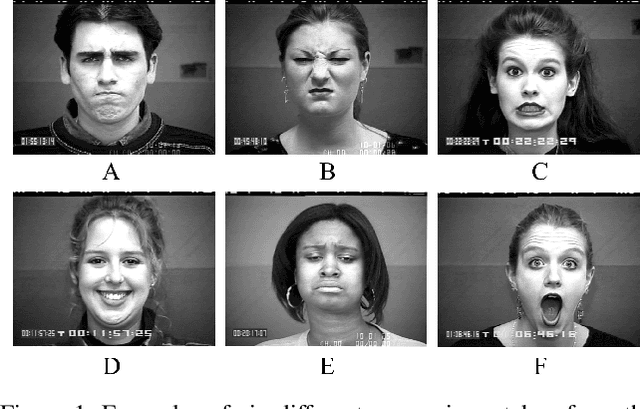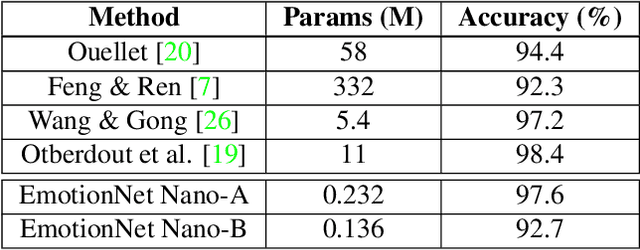EmotionNet Nano: An Efficient Deep Convolutional Neural Network Design for Real-time Facial Expression Recognition
Paper and Code
Jun 29, 2020



While recent advances in deep learning have led to significant improvements in facial expression classification (FEC), a major challenge that remains a bottleneck for the widespread deployment of such systems is their high architectural and computational complexities. This is especially challenging given the operational requirements of various FEC applications, such as safety, marketing, learning, and assistive living, where real-time requirements on low-cost embedded devices is desired. Motivated by this need for a compact, low latency, yet accurate system capable of performing FEC in real-time on low-cost embedded devices, this study proposes EmotionNet Nano, an efficient deep convolutional neural network created through a human-machine collaborative design strategy, where human experience is combined with machine meticulousness and speed in order to craft a deep neural network design catered towards real-time embedded usage. Two different variants of EmotionNet Nano are presented, each with a different trade-off between architectural and computational complexity and accuracy. Experimental results using the CK+ facial expression benchmark dataset demonstrate that the proposed EmotionNet Nano networks demonstrated accuracies comparable to state-of-the-art in FEC networks, while requiring significantly fewer parameters (e.g., 23$\times$ fewer at a higher accuracy). Furthermore, we demonstrate that the proposed EmotionNet Nano networks achieved real-time inference speeds (e.g. $>25$ FPS and $>70$ FPS at 15W and 30W, respectively) and high energy efficiency (e.g. $>1.7$ images/sec/watt at 15W) on an ARM embedded processor, thus further illustrating the efficacy of EmotionNet Nano for deployment on embedded devices.
 Add to Chrome
Add to Chrome Add to Firefox
Add to Firefox Add to Edge
Add to Edge